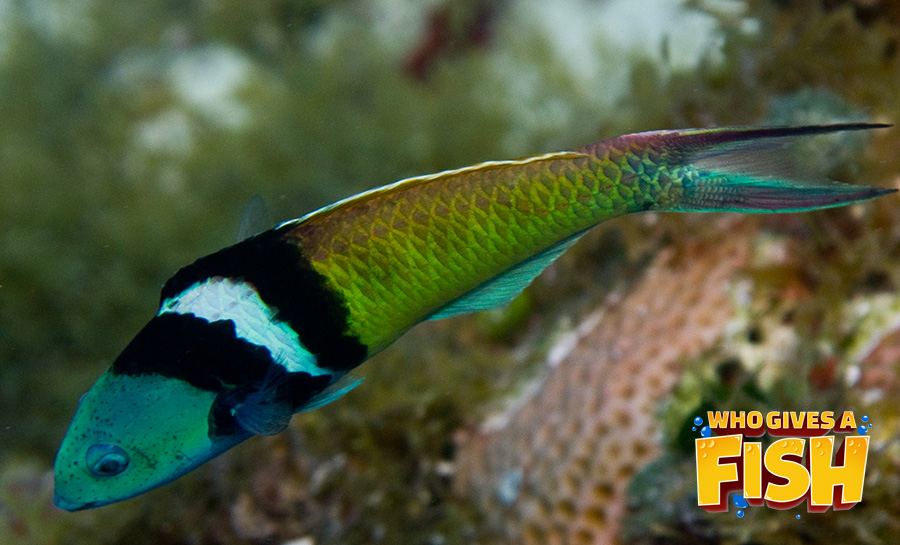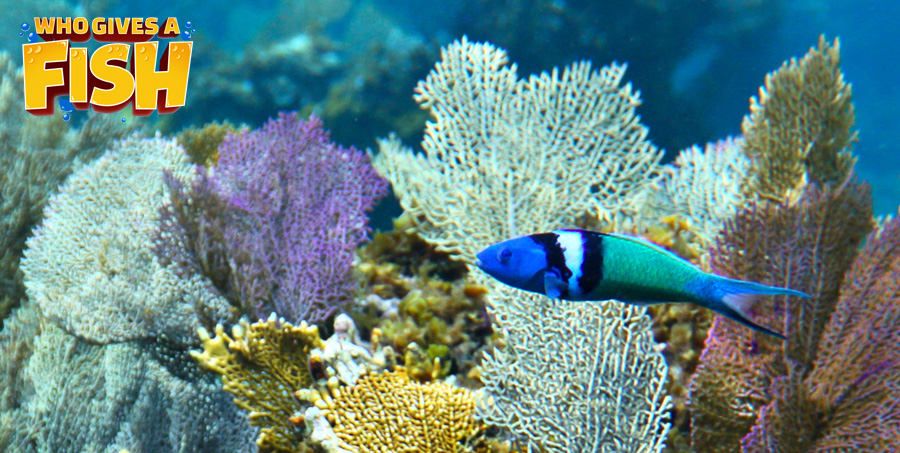Bluehead Wrasse
The Bluehead Wrasse is a very energetic fish and does well with being fed frequently during the day to help maintain these high energy levels. They are very active during day time hours and will be seen popping in and out of small crevices in the rock work and returning to these at night to sleep. They can be seen resting on sandy substrates and using it to burrow into if scared.
- Experience Level: Easy-Medium
- Hardiness: Sensitive to poor water conditions.
- Minimum Tank Size: 75 gal (285 L)
- Size of fish: 6 inches (15 cm)
- Temperament: Aggressive
- Temperature: 74.0 to 79.0° F (23.3 to 26.1° C)
- pH Range: 8.1-8.4
- Diet: Carnivore
Table of Contents
Introduction
Aquarium Setup
Difficulty
Feeding
Breeding and Social
Living for many years, these little wrasses are a great addition to your home aquarium. Easily cared for but are sensitive to poor water conditions, so proper care of your system is vital to ensuring they stay healthy.
These wrasses won’t bother your corals but will often feed on invertebrates and crustaceans in the tank. When housed with other fish of similar temperaments, these make for great fish to have.
During the adult phase, Male Bluehead Wrasses have very notable coloration. A mature male will have a blue head and two lighter black cross bands in the center, with a blue-green body. During early phase, both male and females with have a yellow coloration to them, with a black stripe down the side of their bodies. As the fish ages, these stripes will begin to fade to nothing more than a shadow.
Aquarium Setup
These fish are easy to care for, but unlike some other small fish they are very sensitive to unfavorable water conditions. It is recommended to feed younger individuals several times a day and even as adults they can be fed 2-3 times a day. Considered mostly reef safe, they won’t bother your corals but only feed on small crustaceans and inverts. 10% water changes biweekly or 20% monthly is recommended. The Bluehead Wrasse will sleep in holes in the rocks, so ensuring they have plenty of options to do so will help relieve any stress.
Bluehead Wrasse Aquarium Guide
- Minimum Tank Size: 75 gal (285 L) – A minimum 75 gallons is required for a single fish.
- Suitable for Nano Tank: No
- Live Rock Requirement: Yes – Will hide in caves and secluded sections of rock-work.
- Substrate Type: Any.
- Lighting Needs: Needs good light. These fish will sleep when it is dark.
- Temperature: 74.0 to 79.0° F (23.3 to 26.1° C)
- Breeding Temperature: 79.0° F (26.1° C)
- Specific gravity: 1.020-1.025 SG
- pH Range: 8.1-8.4
- Brackish: No
- Water Movement: Any
- Water Region: All areas of the tank.
Difficulty
As with the introduction of all marine fish to an aquairum, your system should be at least 6 months old and have adequate space and capacity for this shy fish. While relatively easy to take care of, water quality must remain no less than excellent.
Feeding
The Bluehead Wrasse is carnivorous and in the wild they will feed mostly on zooplankton and other small benthic organisms including crustaceans. They have also been seen to feed on ectoparasites found on other fish, making them a great addition to help maintain the health of other fish in your aquarium. They are known to also eat the eggs of other fish, so this should be known if you have mated pairs of other species, with sea urchin eggs being a favorite of theirs.
A varied diet of protein strong in small crustacea and frozen foods like chopped raw fish, brine shrimp, mysis shrimp and some flaked foods, should be given. The Bluehead Wrasse is a big eater and requires feeds 2-3 times a day.
Bluehead Wrasse Feeding Guide
- Diet: Carnivore
- Flake Food: Yes, occasionally.
- Pellet / Tablet: Sometimes – Soak pellets in water before introducing to the tank.
- Live foods (fish, shrimp, worms): Yes
- Frozen Foods: Mysis, brineshrimp, raw fish chunks.
- Meaty Food: 100% of their diet
- Feeding Frequency: Several times per day. Keep well fed to curb aggression.
Breeding
Both primary and secondary males will acquire a bluehead coloration, with females maintaining their yellow color from their initial phase of life and a more faded horizontal stripe as they get older. At the time of writing, these are yet to be successfully bred in captivity.
Social
A shy fish that will defend itself when required, but will often choose to hide in rockwork and corals. Will eat your smaller crustaceans and snails.



